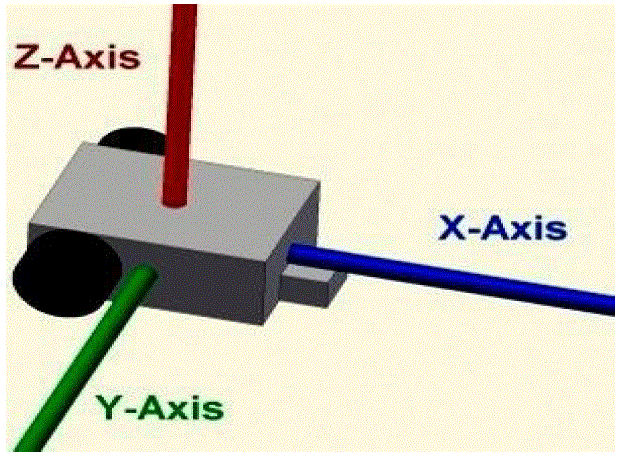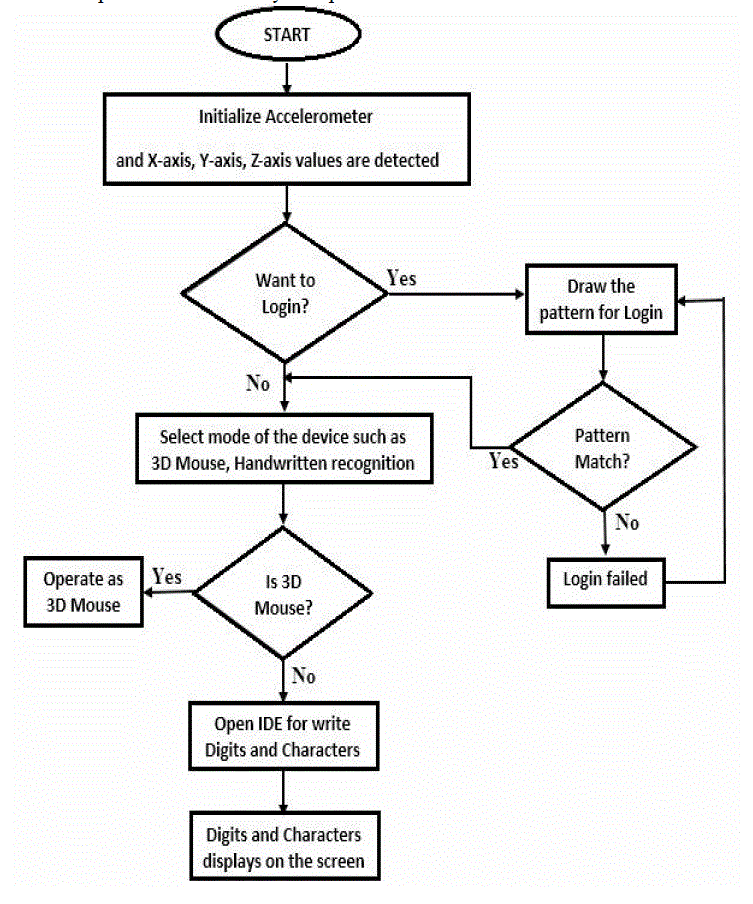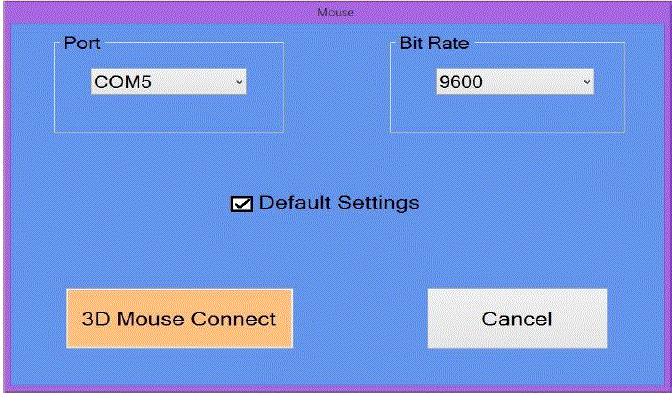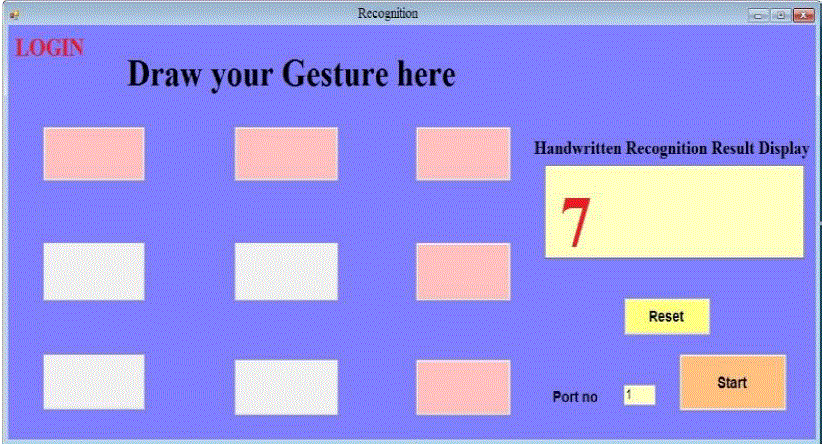Keywords
|
| Gesture recognition; handwritten recognition; integrated development environment (IDE); MEMS accelerometer; static authentication. |
INTRODUCTION
|
| The increase in human-computer interactions in daily lives has made user interaction technology progressively more important. The expansion of human-computer interaction technologies in electronic circuits has been greatly reduced the weight and dimension consumer electronics products such as smart mobile phones and handheld computers. Recently, an attractive alternative, a conveyable and compact embedded system with inertial sensors, has been projected to sense the activities of human hand and to capture hand motion trajectory information from accelerations for handwriting recognition. During this work a miniature accelerometer based recognition systems which acknowledge hand gestures in 3-D is constructed by using gestures, numerical and alphabets will be recognized in the digital format. |
| Recognition technology provides a way to communicate between the human and the computers in order to record information and also provide authentication for the user with the specific character and digit recognition. This Recognition can be done by two methods: 1.Offline recognition and 2.Online recognition. Offline recognition is referred to as the ability of the computer to receive and interpret intelligible handwritten input from sources such as photographs by optical scanning, paper documents, also referred to as intelligent word recognition. Several researchers [1]-[4] have find the solution for the gesture recognition with accurate recognition rates. This paper proposed the Online Digit and Character recognition system in which the digit and character is processed while it was under creation. |
| MEMS are termed as micro electro mechanical system where mechanical parts like membranes have been manufactured at microelectronics circuits. It uses micro-fabrication technology. It has channels, cantilevers, membranes, holes, cavity, and additionally mechanical parts. Miniaturization of the device reduces cost by decreasing material consumption. MEMS also increases applicability by reducing size and mass. Integrated MEMS already include data acquisition, filtering, data storage, communication interfacing and networking. MEMS technology makes the things smaller and better. A typical example is brought by the MEMS accelerometer development. An accelerometer is a device that measures the physical acceleration. The physical parameters are temperature, pressure, force, light etc.it measures the weight per unit mass. MEMS accelerometers can measure is g-force.MEMS accelerometer can detect the acceleration change of three directions in space as shown in Fig. 1. |
| In this paper, we proposed the portable embedded device consists of triaxial accelerometer, microcontroller (PIC16F877A) and zigbee wireless communication module. The acceleration signals measured from the MEMS accelerometer are transmitted to the computer via the zigbee wireless module. Users can utilize this portable device to write digits and make hand gestures. The handwritten recognition procedure is composed of acceleration acquisition, signal pre-processing, feature generation, feature selection, and feature extraction. The acceleration signal preprocessing procedure consists of a moving average filter, a high-pass filter, calibration, and normalization. |
| In this research, MEMS accelerometer measures the acceleration of the signal in three co-ordinates such as x-axis, yaxis, and z-axis. This co-ordinates are display on LCD using PIC microcontroller. The measured acceleration signals of the hand motion are recognized using the Integrated Development Environment (IDE) which was developed using Visual basic. The gesture generated by the accelerometer based device is verified with the user database and thus in turn provides static authentication for the systems. The system is non-specific user authentication and gesture recognition system, so it can be widely applicable to the global networks with the accuracy of 95%. |
II. RELATED WORK
|
| MEMS accelerometer measures the acceleration of the signal in three co-ordinates such as x-axis, y-axis, and z-axis. To capture the hand motions online, the general MEMS sensor which can be operated without any external reference and limitation in working conditions is used. However, motion recognition is comparatively tough for different users since they have different styles and speeds to generate various motion trajectories. Thus, several researchers have tried to avoid this type of problem for increasing the accuracy of handwriting recognition systems [3]. By manipulating the acceleration signals and angular velocities of sensors, several researchers have reduced the error of handwriting trajectory reconstruction [4], [5]. However, these trajectory reconstructions suffer from different errors due to the usage of inertial sensors. Hence, Dong et al. [8] proposed optical tracking calibration method to obtain accelerations of the MEMS inertial sensors based proposed device by calibrating two dimension trajectories and to obtain accurate attitude angle by using multiple camera calibration. Yang et al. [6] proposed a digital pen to track motions in three dimension space by MEMS accelerometer and gyroscopes to improve the recognition accuracy by introducing the efficient acceleration error compensation algorithm which is based on zero velocity compensation. Luo et al. [7] proposed an extended kalman filter with magnetometers to compensate the orientation of the MEMS motion sensor based digital writing device. If the orientation of the instrument was estimated precisely, the motion trajectories of the digital writing instrument were reconstructed accurately [3]. |
| However, aforementioned systems increase the cost by introducing additional sensors such as gyroscopes and also increase the computational of the motion trajectories algorithm. In order to reduce the additional cost due to additional sensors and the computational cost, Lim et al. [9] proposed the accelerometer based system to recognize the pattern using the time lagged feed forward neural network which gives the overall accuracy of 95%. Oh et al. [1] presented a triaxial accelerometer and gyroscope based input device for online three dimension character gesture recognition. The recognition rate of this device was 93.23%.Similarly, Cho et al. [2] was proposed a gesture recognition system consisting of a gesture input device, an algorithm for trajectory, and a recognition algorithm in three dimension space. The average recognition rate of this system was 99.2%.Recently Wang et al. [3] proposed the accelerometer based digital pen with a trajectory recognition algorithm to track the motions based on the probabilistic neural network with 98.75% gesture recognition rate. |
| Gruber et al. [10] and Bashir et al. [11] have proposed online signature verification based on novel biometric smart pen authentication device using techniques based on the finger grip pressure, physical acceleration, and tilt data using the ensemble techniques and algorithm for dynamic time wrapping. Sayed et al. [12] have proposed mouse gesture dynamic authentication system which performs static authentication in short time. However these authentication techniques involves the neural network environment and also these systems rely on the algorithm of complex data processing for biometric authentication, which may not scale when deployed in the environment of globally distributed network. |
III. HARDWARE DESIGN AND DESCRIPTION OF PORTABLE DEVICE
|
| The portable device consists of a triaxial accelerometer (MMA7361L), a microcontroller (PIC16F877A with 10-bit A/D converter) and the wireless transceiver (nRF2401, Nordic).The triaxial MEMS accelerometer measures the acceleration signals generated by a user’s hand motions. The microcontroller (PIC16F877A) collects the analog acceleration signals from the accelerometer and converts analog signals to digital signals via the A/D converter in-built in the microcontroller (PIC16F877A).The wireless zigbee transceiver transmits the digital acceleration signals wirelessly to the computer. |
| The MMA7361L is a low power, low profile capacitive micro machined accelerometer with a signal conditioning, a 1-pole low pass filter, temperature compensation, self-test, 0g-Detect which detects linear free-fall, and g-Select which allows for the selection between ± 1.5g and ± 6.0g.Acceleration values of MEMS accelerometer can be positive, negative or zero. So, the output voltage has a zero bias output. |
| The block diagram of transmitting module is shown in Fig. 2.Transmitting module divided in different unit such as power supply unit, microcontroller unit, LCD (16*2) display unit, MEMS accelerometer and wireless transmitting unit. The block diagram of receiving module is shown in Fig. 3.Receiving module is an integration of power supply, wireless receiving unit, MAX 232, DB9 connecter. |
| In transmitting part, MEMS accelerometer can be used to get the movement of user wrist to move cursor of mouse. Microcontroller (PIC16F877A) is used to control the display on LCD and also connected with zigbee wireless transmitter at 2.4-GHz transmission band with 1-Mb/s transmission rate. Microcontroller (PIC16F877A) integrates a high-performance 10-bit A/D converter and 8-b microcontroller unit on a signal chip. LCD is used to display coordinate x-axis, y-axis and z-axis. The zigbee wireless transmitter is used for transmit the signal to the zigbee wireless receiver which receive the signal send by transmitter and then this signal is applied to MAX232.An UART, universal asynchronous receiver / transmitter is responsible for performing the main task in serial communications with personal computers. UART contributes MAX232 IC and RS232 serial cable. The MAX232 is an integrated circuit that converts signals from an RS232 serial port to signals suitable for use in TTL compatible digital logic circuits.MAX232 is connected with PC through female DB9 pin. In PC, Graphical user interface application is developed which is use to operate the mouse in response to the accelerometer tilt. The overall power consumption of the portable device is 30 mA at 3.7 V. |
IV. MEMS ACCELEROMETER BASED SYSTEM PROCESS
|
| The entire process of MEMS accelerometer based system is explained below in detail by step by step process. The Fig.4 shows the functional representation of the system process in flow chart. |
| Step 1: Initialize accelerometer and upon the movement of the accelerometer it provides various tilt angles in X-axis, Y-axis and Z-axis respectively. These values can be zero, positive or negative |
| Step2:If there is password for the system authentication to login with Gestures, then draw correct gesture for password. |
| Step 3: If the Password matches with the stored password, then system logins successfully .If the password does not matches then system login will be failed and tried to login again. |
| Step 4: Once login into the system, select the mode to operate either as 3D mouse or handwritten recognition mode. |
| Step 5: If the mode selected is 3D-mouse, then accelerometer based system will function as a mouse. |
| Step 6: If the mode selected is Handwritten Recognition, then open the IDE for recognize handwritten digits and characters. |
| Step 7: handwritten digits and Characters will be displayed on the IDE. |
V. EXPERIMENTAL RESULTS
|
| MEMS accelerometer measures the acceleration of the signal in three co-ordinates such as x-axis, y-axis, and z-axis. The Fig.5 shows this co-ordinates are display on LCD. |
| An accelerometer based portable device can also be used as mouse by selecting the mouse mode in the system. The each and specific gesture of the accelerometer based mouse is used to recognize the specific mouse functions. The table I shows, the respective gestures used for doing the specific mouse function in the computer. User can control the movement of cursor such as up, down, left, right by using an accelerometer based device.Fig. 6 shows the IDE developed using Visual basic for 3D mouse. |
| Fig. 7 shows the gestures used for generating the handwritten digits. Handwritten recognition Integrated Development Environment (IDE) is used to recognize the handwritten digits and characters .Fig. 8 shows the handwritten Recognition IDE developed using Visual basic. |
VI. CONCLUSION
|
| The development of the MEMS accelerometer based portable device is used to generate desired commands by hand motions to control electronic devices without any space limitations. The acceleration made by the hand motion is measured by the MEMS accelerometer are wirelessly transmitted to the computer by using zigbee wireless module. MEMS accelerometer based portable device is used to control mouse cursor of computer. This device is used for handwritten digits and characters recognition by using Visual basic. The overall recognition rate of the hand written digits and characters is calculated as 98.50%.Thus the results give us satisfaction in recognizing handwritten digits and characters at low cost. This result encourages us to further investigate the possibility of using our MEMS accelerometer based portable device as an effective tool for HCI applications. Also the usage of simple sensor for the process of authentication using the same MEMS accelerometer based device helps for simple, accurate and efficient way of verification. MEMS accelerometer based recognition system provides an efficient and strong password protection. |
Tables at a glance
|
 |
| Table 1 |
|
| |
Figures at a glance
|
 |
 |
 |
 |
| Figure 1 |
Figure 2 |
Figure 3 |
Figure 4 |
 |
 |
 |
 |
| Figure 5 |
Figure 6 |
Figure 7 |
Figure 8 |
|
| |
References
|
- Jong Koo Oh, Sung-Jung Cho, Won-Chul Bang , Wook Chang , Eunseok Choi , Jing Yang , Joonkee Cho and Dong Yoon Kim, “Inertial sensor based recognition of 3-D characters gestures with an ensemble of classifiers”, Proceedings of the IEEE ninth International Workshop, pp. 112-117,2004.
- Sung-Jung Cho, Jong Koo Oh, Won-Chul Bang , Wook Chang , Eunseok Choi , Jing Yang , Joonkee Cho and Dong Yoon Kim, “Magic wand: A hand-drawn gesture input device in 3-D space with inertial sensors” , Proceedings of the IEEE ninth International Workshop, pp.106-111,2004.
- Jeen-Shing Wang and Fang-Chen Chuang, “An Accelerometer-Based Digital Pen with a Trajectory Recognition Algorithm for Handwritten Digit and Gesture Recognition”, IEEE Transactions on Industrial Electronics, Vol. 59, pp. 2998-3007, 2012.
- Zhuxin Dong, Wejinya U.C. and Li W., “An Optical-Tracking Calibration Method for MEMS-Based Digital Writing Instrument”, IEEE Sensors Journal, pp. 1543-1551, 2010.
- Won S.H.P., Melek W.W. and Golnaraghi F., “A Kalman/Particle Filter-Based Position and Orientation Estimation Method Using a Position Sensor/Inertial Measurement Unit Hybrid System”, IEEE Transactions on Industrial Electronics, Vol. 57, pp. 1787-1798, 2010.
- Jing Yang, Wook Chang, Won-Chul Bang, Eun-Seok Choi, Kyoung-Ho Kang, Sung-Jung Cho and Dong-Yoon Kim, “Analysis and compensation of errors in the input device based on inertial sensors”, Proceedings of the IEEE International Conference on Information Technology, pp. 790-796, 2004.
- Yilun Luo, Chi Chiu Tsang, Guanglie Zhang, Zhuxin Dong, Guangyi Shi, Sze Yin Kwok, Li W., Leong P.H.W. and Ming Yiu Wong, “An Attitude Compensation Technique for a MEMS Motion Sensor Based Digital Writing Instrument”, Proceedings of the IEEE International Conference on Nano/Micro Engineered and Molecular Systems, pp. 909-914, 2006.
- Zhuxin Dong, Guanglie Zhang, Yilun Luo, Chi Chiu Tsang, Guangyi Shi, Sze Yin Kwok, Li, W., Leong, P.H.W. and Ming Yiu Wong,“A Calibration Method for MEMS Inertial Sensors Based on Optical Tracking”, Proceedings of the IEEE International Conference on Nano/Micro Engineered and Molecular Systems, pp. 542-547, 2007.
- Jong Gwan Lim, Sang-Youn Kim and Dong-Soo Kwon, “Pattern recognition-based real time end point detection specialized for accelerometer signal”, Proceedings of the IEEE/ASME International Conference on Advanced Intelligent Mechatronics, pp. 203-208, 2009.
- Gruber C., Hook C., Kempf J., Scharfenberg G. and Sick B., “A Flexible Architecture for Online Signature Verification Based on a Novel Biometric Pen”, IEEE Workshop on Adaptive and Learning Systems, pp.110-115, 2006.
- Bashir M. and Kempf J., “Person authentication with RDTW based on handwritten PIN and signature with a novel biometric smart pen device”, IEEE Workshop on Computational Intelligence in Biometrics, pp. 63-68, 2009.
- Bassam Sayed, Issa Traor´e, Isaac Woungang, and Mohammad S. Obaidat , “Biometric Authentication Using Mouse Gesture Dynamics”, IEEE systems journal, Vol. 7, pp. 262-274, 2013.
|